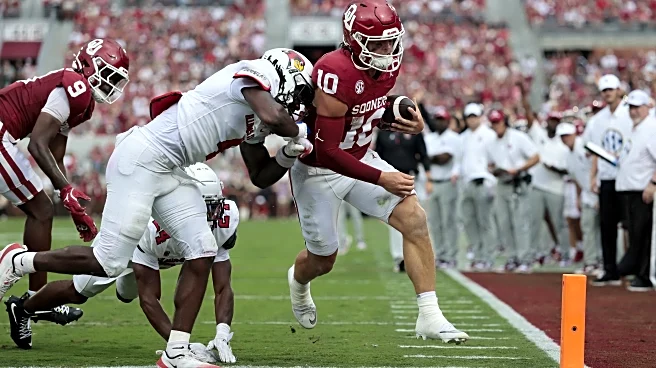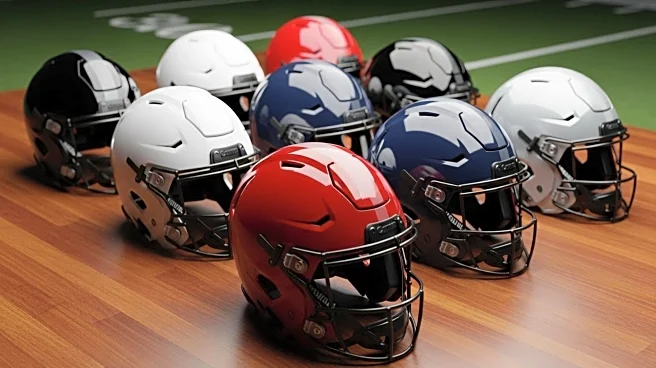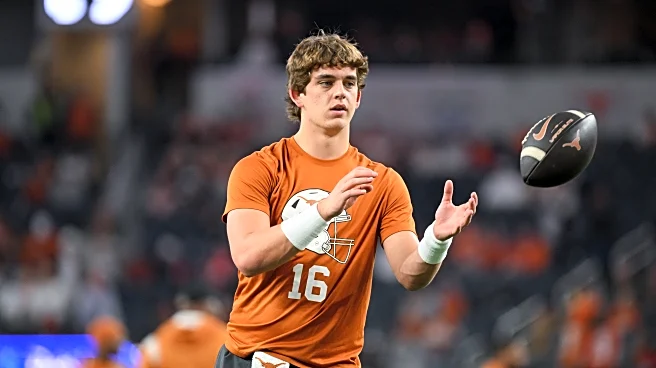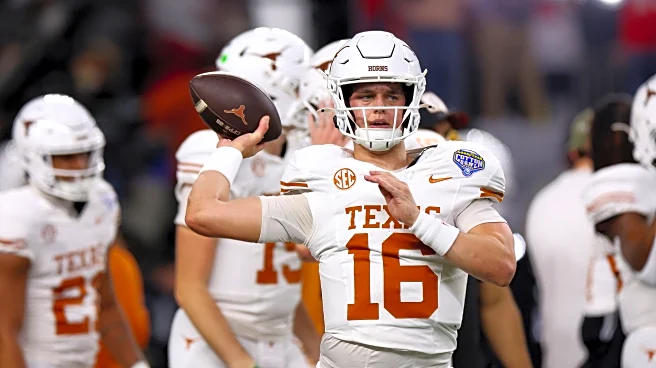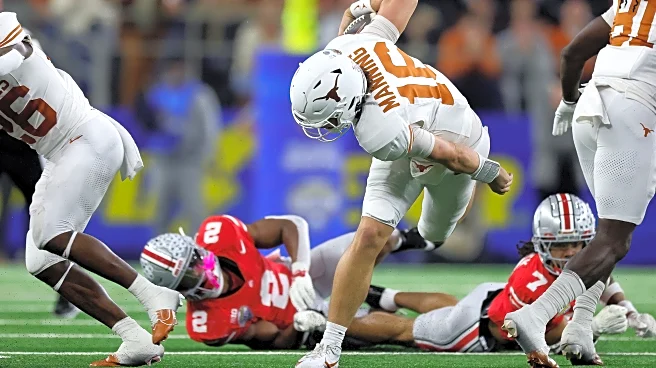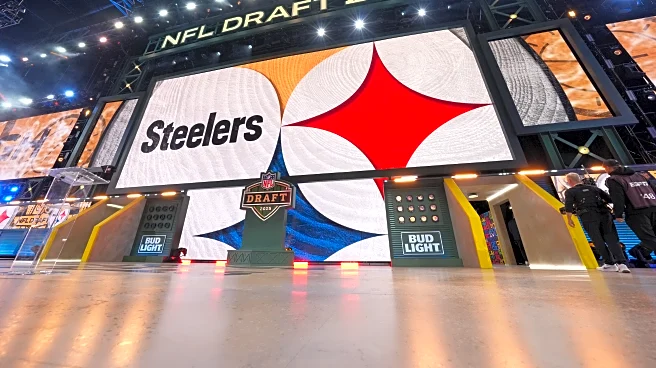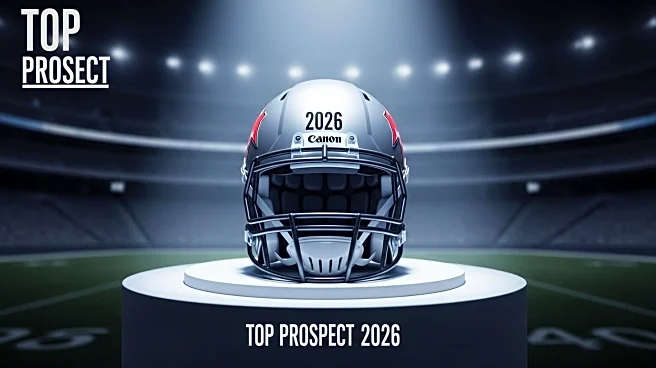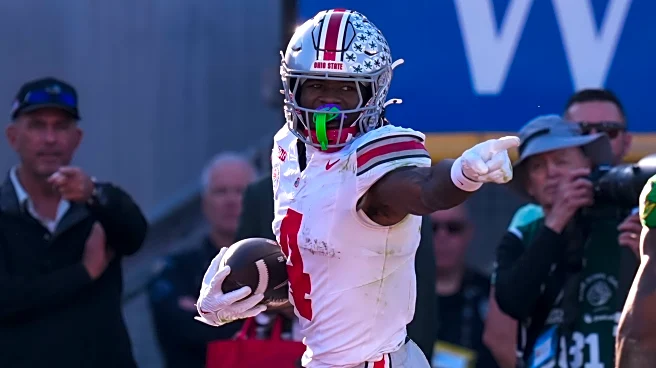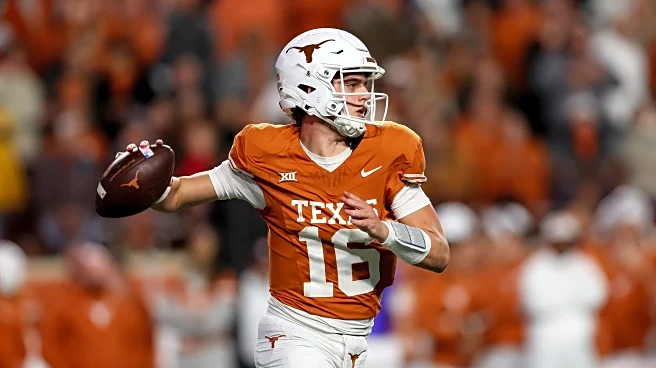
One thing is clear about the 2026 offseason for the Los Angeles Rams: They’ll be in the quarterback market whether through the draft of veteran trade. Fortunately, they started preparing for this scenario last year when they acquired an additional first round pick for the Atlanta Falcons.
It’s time to discuss what we learned from the first week of college football particularly as it relates to the signal callers in next spring’s draft class.
There’s a new sheriff in town, and you should start doing
as much homework as you can on Oklahoma’s John Mateer.
John Mateer, Oklahoma
Consensus boards currently have Mateer as the 54th overall player in 2026. He played last season at Washington State where he threw passes to now-New England Patriots receiver Kyle Williams. His offense coordinator also came to Oklahoma with him, so there’s consistency at the play caller level.
Simply put, Mateer is an incredible physical talent. He runs a 4.6 40-yard dash and looks more like a running back from a build perspective. In the opening week against Illinois State, he ran over a defender along the boundary to power through for a touchdown.
Sure, it’s mildly concerning that he’s only 6-1. Like most shorter quarterbacks he must get better at throwing over the middle of the field. The positives seem to significantly outweigh the one notable drawback to his prospect profile.
Mateer reminds me of a more souped up version of Zach Wilson. That idea probably causes fans to shudder; however, the bet the New York Jets made on Wilson’s ceiling is probably one you’d still make 99 times out of 100. It’s also worth noting that Mike LaFleur—LA’s offensive coordinator—was in the same role under Robert Saleh in New York when the Jets drafted Wilson. That seems to suggest how Mateer could be a fit for LaFleur and McVay in Los Angeles.
Most importantly, teams are always going to buy the prospect with the highest ceiling. Elite quarterbacks by their very nature are exceptions, and you must chase exceptions in order to strike gold.
If teams have a choice between Garrett Nussmeier, Cade Klubnik, Drew Allar, LaNorris Sellers, and Mateer, they will probably bet on Sellers and Mateer early in the draft almost every time. That’s the key determinant in how I view the 2026 crop of signal callers.
Arch Manning, Texas
We must remember that this was Manning’s first career start on the road and it came against a team in Ohio State with near-NFL level talent. Still, Manning looked incredibly uncomfortable and rattled. His footwork and technique looked all over the place. It makes me wonder how much these issues cropped up in practice and whether this is truly an outlier event.
Confidence is key for quarterbacks. The lofty expectations for Manning was probably unfair given where he was in his college career. It’s difficult to imagine him bouncing back in a big way that drives him to leave for the NFL Draft this year.
It’s only one game but it might be enough to push Manning to the 2027 class.
Garrett Nussmeier, LSU
Nussmeier might be a fine quarterback in the NFL. Increasingly so, they just don’t make players like him at the position any longer. Pocket passers are going the way of the dinosaurs.
Nussmeier—if in the discussion for number one overall in 2026—would be the most physically limited player in such conversations since Jared Goff in 2016. While playing from the pocket is the most important element of successful quarterbacking, by selecting Nussmeier you are effectively tying one hand behind your back from an offensive perspective for the next decade (assuming he hits). Modern NFL QB’s must be able to create plays with their legs and beat defenses with their creativity.
Nussmeier is simply too boring and too limited to be taken first overall.
Cade Klubnik, Clemson
There are more physical traits to like with Klubnik than Nussmeier; however, the Clemson signal caller has momentary lapses in decision making. It’s a major concern, but there are offensive minds that are willing to live with his big arm and dual-threat ability in light of the occasional mistake. McVay is probably one of those, as evidenced by Matthew Stafford being cut from a similar cloth.
But Klubnik almost had as worse of a Week 1 as Manning. He was personally held out of the end zone and completed 19 of 38 passes (50%) for 230 yards and an interception. It’s not time to panic or write him off, but it does show unraveling at the edges for this prospect.
LaNorris Sellers, South Carolina
In my view, Sellers is as much of an unknown as Manning. He’s an unfinished product that has unbelievable potential. He doesn’t need to put it all together at the college level in order to enter the discussion as the draft’s top quarterback, he simply needs to scratch the surface and offer a proof of concept. That alone is enough to thrust him individually ahead of Nussmeier and Klubnik.
One aspect that Sellers must work on is his touch on deep passes. He seems to throw every pass on a rope, which increases the degree of difficulty in terms of accuracy. He must develop more touch, which will allow receivers a chance to run underneath and adjust.
I’d also keep in mind the recent NFL failures of Trey Lance and Anthony Richardson. Do their shortcomings change teams’ outlook on these highly talented but overall inexperienced, developmental quarterbacks?
Drew Allar, Penn State
Consensus boards currently have Allar as the 14th overall prospect in 2026 and is most often mocked at 12th overall to the Rams.
At 6-5, 238 lbs. he will draw comparisons to the likes of Josh Allen; however, to me he’s more Phillip Rivers. Allar is mobile but not necessarily a runner. I don’t think you’d want to design running plays for him at the NFL level as the Bills do for Allen, outside of short-yardage and goal line situations.
I do like Allar’s reliable decision making, which is why my mind more so goes to a modern day Rivers from a comparison standpoint. He’s someone you can trust to take care of the ball.
